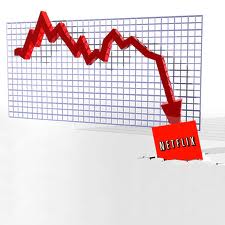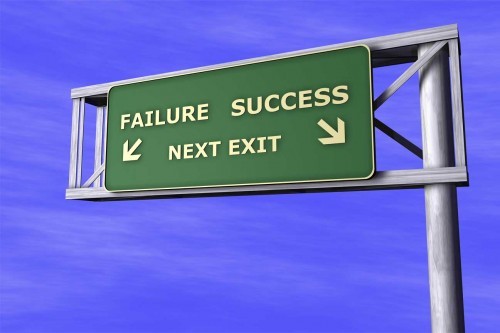 What 2011 taught us about strategic distractions, and their impact on business value…
What 2011 taught us about strategic distractions, and their impact on business value…
A few months back, I remember having a good chuckle while watching a Jon Stewart parody on the Republican candidate field. The monologue poked fun at the media’s tendency, during its seemingly relentless coverage of the leading candidate on that day, to completely shift direction the moment a new contender entered the picture.In this case, Bachman was the leader du jour, the media was the dog in the Pixar movie “Up”, and the part of the squirrel was played by none other than Rick Perry, who these days appears to be succeeding only at distracting himself.

“Squirrel moments” happen all around us, and with greater frequency than we’d care to admit. As flawed human beings, it’s easy for us to get sidetracked from what we should be doing, by some urgent new distraction that seems terribly critical in the moment. Yet most of us eventually manage to refocus, once we become aware (through our own cognitive skills or because a friend or colleague points it out to us) of how badly the squirrel moment has driven us off-course. Typically it is the speed with which we are able to re-calibrate ourselves that ultimately determines the degree of damage, if any, that is caused by the distraction.
Some “squirrel moments” have far reaching impacts…
But for organizations, the challenge of refocusing after a significant distraction is far greater. Unlike individual distractions, those in organizations often require refocusing entire workgroups, business units, and processes that may have strayed far from the core focus and strategies of the business. It’s a bit like comparing a fighter jet to a large commercial airliner. While both are capable of course correction, larger aircraft don’t react “on a dime” and require a lot more time and space to maneuver. The magnitude of the corporate distraction, the breadth of areas it touches, and the duration of the distraction, are just a few of the variables that determine the organization’s ability to react and readjust quickly.
 2011 offered numerous examples of companies adversely affected by a loss of focus.
2011 offered numerous examples of companies adversely affected by a loss of focus.
- The enormous value that Netflix had created, based on a simple and straightforward product offer embraced by scores of customers, was severely jeopardized by the company’s ill-advised decision to migrate to a more complex, two-tiered pricing model driven largely by a short-term desire to justify an overinflated stock price. The outcome was both predictable and horrific, as customers departed in droves, destroying an enormous amount of company value in very short order.
- Bank of America, arguably one of the better banks in terms of customer satisfaction and experience, watched much of that brand value evaporate following announcement of a pricing move (its now infamous $5 charge for debit card use) that evoked a similar customer outrage. While perhaps necessitated by financial realities (debatable), its positioning, execution, and ultimate response were painful to watch play out.
- Research in Motion, maker of the Blackberry, whose loyal business following was predicated on its operational and reliability advantages, suffered a huge blow to its value on the heels of a long and poorly managed network outage—a network on which it had based much of its service differentiation.
 Berkshire Hathaway, a company whose entire business is based on the prudent, sober, and wise investing of its founder, ended up the subject of one of 2011’s stories of financial impropriety–an insider trading scandal the likes of which we’ve come to expect from the industry, just not from these guys.
Berkshire Hathaway, a company whose entire business is based on the prudent, sober, and wise investing of its founder, ended up the subject of one of 2011’s stories of financial impropriety–an insider trading scandal the likes of which we’ve come to expect from the industry, just not from these guys.- HP announced another redirection of its product portfolio, and yet another shift in its leadership team–a true “squirrel moment” with a healthy dose of “been there, done that.”
S*** Happens! You just have to manage it…
Sure, one might argue, “bad things happen to good companies”, and in these and a myriad of other examples from 2011 there is certainly some truth to that. Sometimes, these blunders cannot always be attributed to bad strategies or failure to stick with a good one. Sometimes, it’s the tactical decisions that are “far removed” from the C-suite and its strategic decision making. Sometimes these decisions, as we saw above, are undertaken because of a financial necessity that in the short term might trump a marketing strategy.
But, by the same token, those seemingly small disconnects may, in fact, be symptomatic of the problem itself. While management may not be able to control ALL of the drivers that lead to negative consequences, effective development and MANAGEMENT of strategy can not only limit the damage caused by veering off course, but can play a very important role in course correction after the fact. For many companies the words “MANAGEMENT” and “STRATEGY” connote different, and often conflicting, disciplines. But for those successful at avoiding and responding to distractions, these are highly related and often inseparable competencies.
Great strategy management is about the WHAT and the HOW…
So, how can you ensure that corporate distractions are kept to a minimum, and effectively refocus and re-center the business when they invariably do occur?
- Define and clarify your business strategy — This sounds like motherhood and apple pie. It always does. But it remains the preeminent cause of breakdowns during times of distraction, because the strategy is either too complex to begin with, or it lacks sufficient clarity to engender the necessary alignment and commitment to continue keeping the firm focused in times of distraction. Your strategy is more than simply a restatement of a vision or broad ambition. It is a specific answer to a specific question: What do we need to do to ensure success within your existing business environment? One of Apple’s most effective demonstrations of strategic clarity was Steve Jobs’ insistence on collapsing their previously expansive product portfolio into four clear product families that would redefine its future. Clear, compelling, with an easily-understood line of sight to renewing the value of the business.
- Do more than just communicate it — Management 101 preaches “communicate your strategy.” But communication alone is insufficient to create the alignment necessary to avoid distractions. One of the most rewarding aspects of this job is watching clients challenge ideas and recommendations (even from yours truly) based on an automatic and often deeply-felt narrative of how the suggested change(s) might conflict with their core strategy. For them, it’s more than just “talking points.” It’s a compelling narrative they have embodied through words and examples. Sure, these too can be misinterpreted occasionally, but just like a pilot who is expected to react with some degree of muscle memory, we must develop and nurture that level of alignment as a first line of defense against corporate distraction. Vision, values, and strategies. They all need to be seamlessly integrated within a crisp, clear, and compelling narrative.
- Build and use the right navigation systems — When NASA launches a probe to Mars, it must travel undistracted for about nine months in order to hit a fast-moving and very small target (the red planet). Even the slightest and briefest of external forces can cause the probe to miss the planet by millions of miles. Having the right navigation systems and a network of alerts and course-correction mechanisms is crucial to a mission like this, and it is just as critical to a business like yours. In business, such technologies and processes comprise your integrated performance management system, and they should include the KPI’s of the business, the network of leading and lagging business metrics we must monitor, and a clear understanding of the relationships between them.
- Scenario and contingency planning — Made popular by companies like Shell years ago, the discipline to do this, and do it well, has fallen out of vogue. Not sure why, other than what I heard from a client a few years back…that it “forced us to admit that we might have the wrong strategy”, or that it “would distract us from adhering to that strategy”. That’s as much hogwash today as it was when I first heard it, and failure to implement a rigorous scenario planning process is, as ever, tantamount to sticking your head in the sand. If subjecting your strategic plans to that level of scrutiny adversely affects your ability to execute the strategy as designed, while being agile enough to react and learn from mistakes, then you either have the wrong strategy, the wrong leadership, or both.
- The ability and agility to recover from distractions — Unlike the dogs in “UP”, we don’t have masters to yank our collars or order us back into focus. (unless we work in a purely autocratic environment). What we do have is the ability to learn and react. It helps if we have a contingency plan with automatic responses. But we must also have the ability to recognize when something is not working, and the agility to put that learning in motion quickly and effectively.
 History doesn’t have to repeat itself…
History doesn’t have to repeat itself…
2011 wasn’t the first time we’ve seen these types of blunders. And it most certainly won’t be the last.
We all remember the Tylenol scare of many years ago. Drug companies like J&J, who exist largely at the mercy of safety protocols and regulations, can easily be crushed by such events. But J&J’s ability to identify and react to the crisis with agility prevented what could have been an historic business failure. Their “distraction,” which arguably could have been anticipated, was kept fairly well contained.
Others weren’t so fortunate. The Exxon-Valdez and BP-Macondo debacles are two great examples of this. Safety, which should be a core strategic underpinning for any company, but particularly those in this industry, in large measure fell victim to distraction. But, in both cases, it was the lack of a coherent, actionable response strategy that kept business value flowing out of the pipeline/tanker as fast as the oil.
If we have the right blueprint for managing strategy, we can limit the number of distractions, identify and react appropriately when they do occur, and respond with agility and effectiveness to keep adverse consequences to a minimum.
-b/b
Bob Champagne is Managing Partner of onVector Consulting Group, a privately held international management consulting organization specializing in the design and deployment of Performance Management tools, systems, and solutions. Bob has over 25 years of Performance Management experience with primary emphasis on Customer Operations in the global energy and utilities sector. Bob has consulted with hundreds of companies across numerous industries and geographies. Bob can be contacted at bob.champagne@onvectorconsulting.com
Brian Kenneth Swain is a Principal with onVector Consulting Group. Brian has over 25 years of experience in Marketing, Product Management, and Customer Operations. He has managed organizations in highly competitive product environments, and has consulted for numerous companies across the globe. Brian is an alumnus of McKinsey & Company, Bell Laboratories, and Reliant Energy, and is a graduate of Columbia University and the Wharton Business School. He can be contacted at brian.swain@onvectorconsulting.com.
 An end-to-end approach for managing customer experience strategy and delivering on its promises...
An end-to-end approach for managing customer experience strategy and delivering on its promises...


 Reasonable behavior for a typical human, granted, but is it as reasonable to expect the same apparently irrational behavior pattern from a corporation, whose goals are presumably established in a more thoughtful (and usually sober
Reasonable behavior for a typical human, granted, but is it as reasonable to expect the same apparently irrational behavior pattern from a corporation, whose goals are presumably established in a more thoughtful (and usually sober  manner. Is it surprising that these goals often realize the same miserable success rates.?
manner. Is it surprising that these goals often realize the same miserable success rates.? At the end of the year, or any reporting period for that matter, we all want to be in a position to declare success on our initial goals for the year. And where we haven’t been successful, we want to at least have had ample opportunity to course-correct to get back on track, or deliberately declare a different target. What we don’t want is to miss the numbers and not know why. Again, sounds like a no brainer, but those kind of questions and blank stares still plague many business and operating executives when it comes to missed performance goals.
At the end of the year, or any reporting period for that matter, we all want to be in a position to declare success on our initial goals for the year. And where we haven’t been successful, we want to at least have had ample opportunity to course-correct to get back on track, or deliberately declare a different target. What we don’t want is to miss the numbers and not know why. Again, sounds like a no brainer, but those kind of questions and blank stares still plague many business and operating executives when it comes to missed performance goals.


 Berkshire Hathaway, a company whose entire business is based on the prudent, sober, and wise investing of its founder, ended up the subject of one of 2011’s stories of financial impropriety–an insider trading scandal the likes of which we’ve come to expect from the industry, just not from these guys.
Berkshire Hathaway, a company whose entire business is based on the prudent, sober, and wise investing of its founder, ended up the subject of one of 2011’s stories of financial impropriety–an insider trading scandal the likes of which we’ve come to expect from the industry, just not from these guys.



